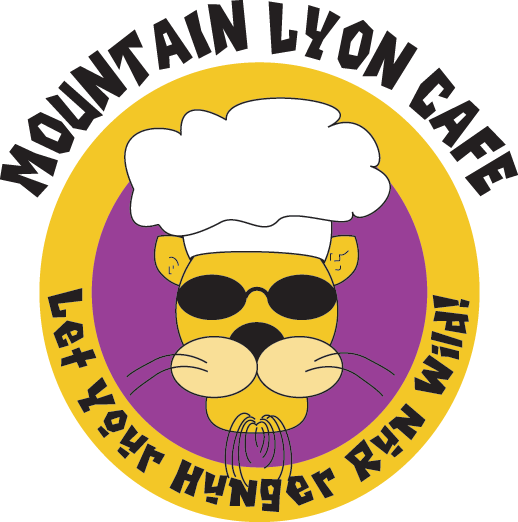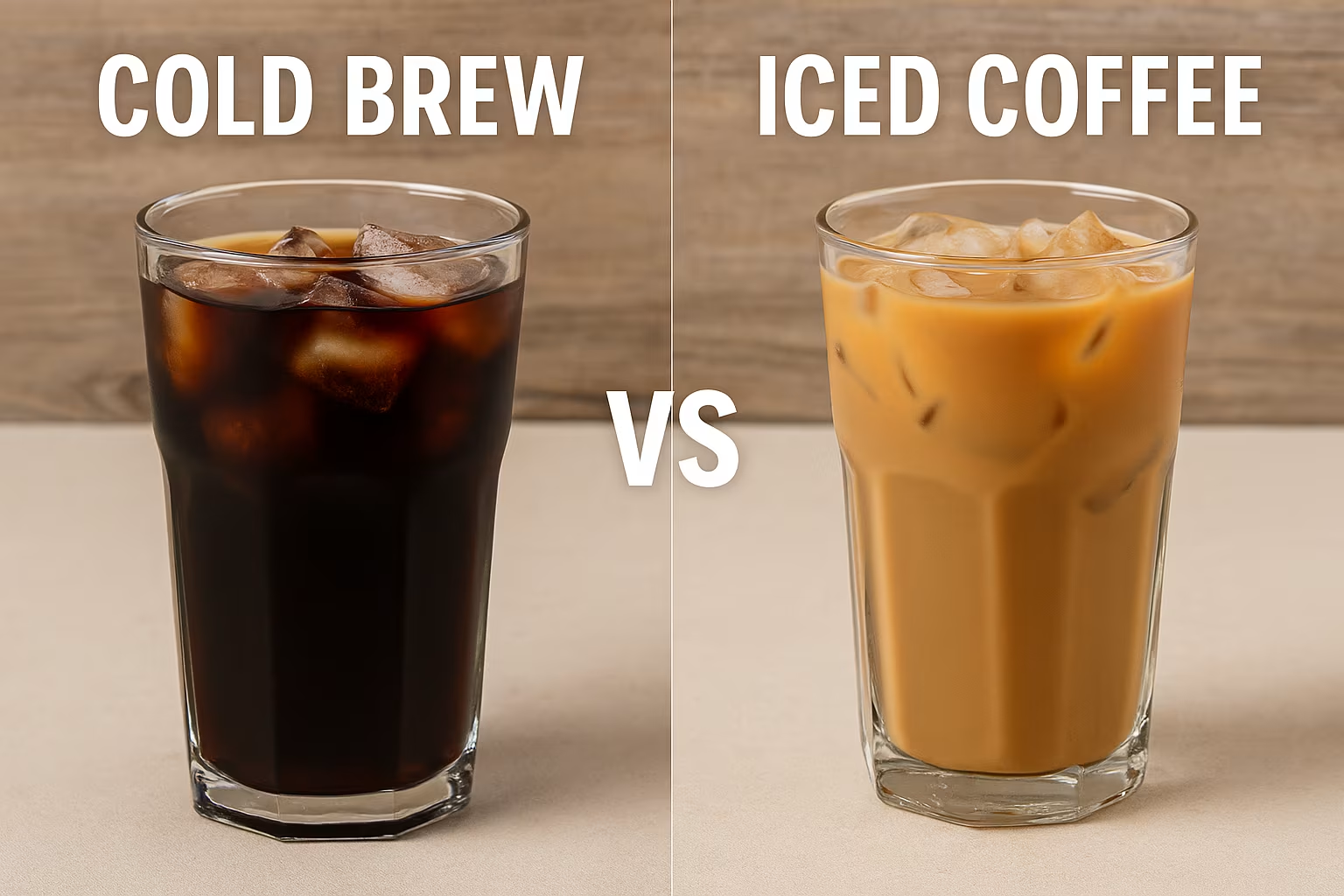Confused about cold brew vs iced coffee? Discover the real differences in flavor, brewing method, caffeine content, and health benefits. Learn which chilled coffee suits your taste and lifestyle in this in-depth comparison for coffee lovers and newbies alike.
Cold Brew vs Iced Coffee: What’s the Real Difference?
On a hot afternoon or during a productivity boost at work, there’s nothing quite like a cold cup of coffee. But walk into any café and you’ll often find two popular options staring back at you — cold brew and iced coffee. While they might seem similar at first glance, these two chilled coffee drinks are fundamentally different in everything from brewing method to flavor, caffeine content, and even health benefits. So, cold brew vs iced coffee: what’s the real difference? This in-depth guide will break it down like a seasoned barista, giving you the clarity you need to make your perfect pick — or maybe even switch sides.
Understanding the Key Difference Between Cold Brew vs Iced Coffee
At the heart of the confusion is the fact that both drinks are served cold, often over ice, and look remarkably similar. But the key difference lies in the brewing method.
Cold brew is made by steeping coarse coffee grounds in cold water for an extended period (usually 12–24 hours).
Iced coffee is traditionally brewed hot and then chilled before serving.
“Cold brew is brewed cold. Iced coffee is brewed hot. That’s the real foundation,” says James Hoffmann, World Barista Champion and coffee educator.
The result is a striking contrast in taste, caffeine content, acidity, and even preparation time.
How Each Type Is Brewed
Let’s break down the brewing methods:
Cold Brew
Ground coffee is mixed with cold or room-temperature water
Brewed over 12 to 24 hours
Often made as a concentrate and diluted before serving
Iced Coffee
Regular drip or pour-over coffee, brewed hot
Cooled rapidly or poured over ice
Often brewed at double strength to avoid dilution
“The difference isn’t just temperature. It’s chemistry,” notes Scientific American in a 2023 feature on coffee brewing reactions.
Brewing Time and Temperature
| Brewing Type | Time Required | Brewing Temp | Strength |
|---|---|---|---|
| Cold Brew | 12–24 hours | ~20°C (room temp) | High (concentrated) |
| Iced Coffee | 5–10 minutes | 90–96°C | Medium |
Cold brewing extracts flavors slowly and gently, avoiding the bitterness and acidity that high-temperature extraction can cause. Meanwhile, iced coffee retains more of the brighter, more acidic notes found in hot coffee.
Ingredients and Grind Size
Both drinks begin with coffee and water, but the grind size and bean choice play a huge role:
Cold brew works best with coarse grounds, typically medium to dark roasts for a smoother finish.
Iced coffee is best with medium grind, often light to medium roasts to highlight floral or fruity notes.
Pro tip: Use filtered water and freshly ground beans for either method — water makes up 98% of the drink!
Flavor Profiles: What to Expect from Each Drink
Understanding the flavor difference is essential to choosing the right drink for your mood or preference.
Cold Brew Flavor Notes
Cold brew is known for its smooth, mellow, and low-acid profile. Because it’s brewed without heat, many of the bitter and acidic compounds are never extracted. What remains is a chocolaty, nutty, and slightly sweet taste, even without sugar.
“Cold brew tastes like the velvet version of coffee,” says Lyoncafe’s master roaster, reflecting on their top-selling cold brew line at mtnlyoncafe.com.
Iced Coffee Taste and Texture
Iced coffee, by contrast, keeps much of the brightness and acidity of traditional hot coffee. The flavor is:
Livelier and more acidic
Often fruity or floral (depending on the bean)
Slightly more bitter, especially as the ice melts
If you enjoy your coffee bold, crisp, and with a little edge, iced coffee might be your go-to.
Flavor Profile Comparison Table
| Attribute | Cold Brew | Iced Coffee |
|---|---|---|
| Acidity | Low | Medium–High |
| Bitterness | Minimal | Noticeable |
| Sweetness | Naturally sweet | Depends on roast |
| Mouthfeel | Smooth, syrupy | Light, refreshing |
| Complexity | Subtle, rounded | Bright, dynamic |
Caffeine Content Comparison
Now let’s answer one of the most common questions: Which one packs a bigger punch?
Which One Has More Caffeine?
Cold brew usually wins — but it’s more complicated than it looks.
Cold brew is often brewed as a concentrate and then diluted. Even after dilution, it tends to have more caffeine per serving than iced coffee.
Cold brew concentrate: ~200–300 mg per 12 oz
Cold brew diluted: ~150–200 mg per 12 oz
Iced coffee: ~90–120 mg per 12 oz
“The longer the brew, the stronger the buzz,” according to a caffeine study published by Healthline in 2024.
However, caffeine content also depends on:
Bean variety (robusta vs arabica)
Brew ratio
Dilution level
Note: Some coffee shops like Starbucks serve cold brew with ~205 mg caffeine in a tall, versus ~120 mg for iced coffee.
How Brewing Affects Strength
Hot water extracts more quickly, but also brings more acidity and bitterness. Cold water extracts more slowly but thoroughly, leading to higher caffeine yield over time.
If you’re sensitive to caffeine or drinking late in the day, opt for a half-diluted cold brew or go with iced decaf.
Which Is Healthier? Nutritional Breakdown
Beyond taste and caffeine, many coffee drinkers ask: Which is better for your health — cold brew or iced coffee? The answer depends on factors like acidity, caloric intake, and how much sugar or milk you add.
Calories and Acidity
Cold brew naturally has a lower acidity level, making it a gentler option for those with acid reflux, sensitive stomachs, or tooth enamel concerns. Because cold brew tastes smoother and slightly sweet even without additives, many people drink it black, keeping the calorie count low.
On the other hand, iced coffee tends to be more acidic and often needs milk, cream, or sugar to balance the sharper flavor. This can add unwanted calories if you’re not careful.
Nutritional Comparison (12 oz, unsweetened)
| Attribute | Cold Brew | Iced Coffee |
|---|---|---|
| Calories | 5–10 | 5–10 |
| Acidity | Low | Medium–High |
| Likelihood of Adding Sugar | Lower | Higher |
| Digestive Friendliness | Gentler | May irritate sensitive stomachs |
“Acidity isn’t just about taste. It’s a health consideration, especially for those with GERD or IBS.” – Dr. Linh Tran, Nutritionist & Coffee Researcher
Sugar, Additives, and Customization
Thanks to its naturally smooth taste, cold brew encourages drinkers to skip sweeteners altogether. Meanwhile, iced coffee, especially mass-produced versions, is often sweetened by default.
Customization Tips for Healthier Cold Drinks:
Use plant-based milk (oat, almond) instead of dairy creamers
Add cinnamon for flavor without sugar
Opt for zero-calorie sweeteners like stevia if needed
Try infused cold brews (e.g., orange peel, mint, lavender) for natural flavor
Price, Prep Time & Convenience
Brewing habits are often shaped by lifestyle. Whether you’re a home barista or a café regular, understanding the time and cost trade-offs can help you choose wisely.
Making It at Home vs Ordering Out
Cold brew takes time — up to 24 hours — but once brewed, it lasts in the fridge for up to a week. That makes it great for meal prepping your caffeine.
Iced coffee, in contrast, is fast and convenient. You can brew a fresh cup in minutes and chill it on demand.
Pros & Cons Table
| Factor | Cold Brew | Iced Coffee |
|---|---|---|
| Brew Time | 12–24 hrs | 5–10 min |
| Shelf Life | Up to 7 days | Must be consumed fresh |
| Equipment Needed | Large jar or cold brew maker | Coffee pot or pour-over |
| Ideal for | Planners & preppers | Spontaneous drinkers |
Cost Per Cup: Which Saves You More?
Cold brew is more concentrated, so you get more servings per batch. However, store-bought cold brew tends to be more expensive.
Homemade Cold Brew: ~$0.50–0.75 per cup
Homemade Iced Coffee: ~$0.30–0.50 per cup
Coffee Shop Cold Brew: ~$4.00–6.00
Coffee Shop Iced Coffee: ~$3.00–4.50
“A single jar of Lyoncafe’s cold brew blend can last you a week — and still taste better than most cafés.” – Lyoncafe customer review, 2025
Cold Brew or Iced Coffee? Find the Right One for You
There’s no one-size-fits-all answer. Your choice depends on taste preference, caffeine tolerance, health goals, and even the weather.
Based on Weather and Season
Summer & humid climates: Cold brew wins for its long shelf life and mellow taste.
Spring or cooler days: Iced coffee with bright acidity feels more energizing.
Based on Taste Preferences
If you love smooth, low-acid, chocolaty notes → Go for cold brew
If you prefer brighter, tangier, fruity flavors → Try iced coffee
Based on Caffeine Tolerance
Need a strong, all-day fuel? Cold brew’s your best friend.
Sensitive to caffeine or sipping in the evening? Choose iced coffee — or decaf cold brew.
“Choosing your cold coffee is like choosing your music playlist. Some days call for jazz, others for rock.” – Lyoncafe’s Barista Guidebook
See more:
Trends and Popularity: Which One Is Winning in 2025?
Cold brew has gone from niche to mainstream. According to Statista, global cold brew consumption grew by 23% YoY in 2024, with especially strong growth among Gen Z and Millennial consumers.
Coffee Industry Trends
RTD (Ready-to-Drink) cold brew sales are booming, driven by health-conscious buyers.
Sustainable brewing is gaining momentum, with brands offering zero-waste cold brew kits.
Conclusion: Cold, Caffeinated, and Clearly Different
While both drinks deliver cool, caffeinated refreshment, cold brew and iced coffee are distinct in flavor, method, and mood. Now that you understand the real difference, you can sip with confidence — whether it’s an early-morning meeting, a lazy Sunday, or a creative brainstorming session.
“Coffee doesn’t just wake you up. It shapes how you feel, think, and connect.”

My name is Kara Chavez, and I love coffee. I love making the best coffees – espresso, latte, macchiato. I always strive for perfection in my barista skills, and I take great pride in bringing delicious cups of coffee to my customers.
I’ve been in the coffee industry for many years, and I know everything there is to know about brewing the perfect cup of coffee. My passion for coffee shines through in every cup I make, and I hope you’ll stop by soon so I can share my love of coffee with you!

